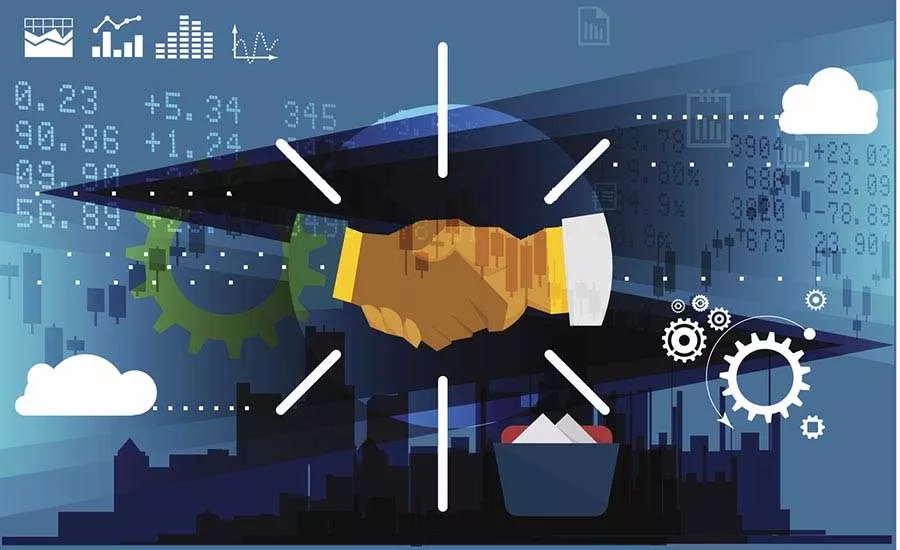2017 M&A Forecast: What’s driving growth and why some fail
Slow growth—one driver of Mergers and Acquisitions—in the food and beverage segment could be caused by “big food” not listening to consumers.

A new report, Off to New Peaks in Uncertain Times, from A.T. Kearney, a global strategy and management consulting firm, says the food and beverage industry should expect to see more record M&As driven by global growth, consolidation and private equity.
Coming off of 2016, where there were 58 huge deals valued at more than $1 billion, the findings say there will likely be more of the same regarding M&As this year, due partly to counteract the sluggish organic growth the CPG market is experiencing.
However, the report also warns that there could be brakes put on some deals due to rising political uncertainty around the world, as seen in the surprise Brexit vote last year, and also from rising US nationalism, as promised by the Trump Administration to “put America first” when creating new tax policies and evaluating trade agreements.
To reach the report’s finding, analysts looked at more than 100,000 consumer and retail transactions from 2005 to 2016, and surveyed more than 100 c-level executives of private equity firms and consumer and retail companies. FE talked to Bahige El-Rayes, co-author of the report and principal in the consumer and retail practice of A.T. Kearney.
One of the main drivers of M&As listed in the report is slow growth. Why are food and beverage companies facing such sluggish organic growth conditions?
Bahige El-Rayes, A.T. Kearney: The main reason we’re seeing is that major food companies are over-indexed on highly processed foods, while growing customer segments are quickly shifting toward high quality, fresh, organic and sustainably produced foods.
The top 25 food and beverage (F&B) companies in the United States have ceded 300 basis points to small and medium-size competitors since 2012 and have grown revenue at 1.8 percent, compared with 11 to 15 percent growth for these smaller companies.
US consumers are voting with their wallets to dethrone large, established food companies. Changes in consumers’ core values—amplified by social media, celebrity chefs and myriad food experts—have worked to reward small and midsized companies with above-average growth while slowing the growth of the top 25 F&B companies.
The report says, “Nimble innovators stand to benefit” from the M&As. What are nimble innovators? What will they do for acquiring companies? If possible, please provide an example of a food and beverage company that is a nimble innovator.
Bahige El-Rayes, A.T. Kearney: Nimble innovators are companies that have been able to establish the internal and external capability of responding creatively and quickly to changes in the marketplace.
They develop innovation ecosystems, which start with identifying the gap or need they are trying to fill, finding the right (usually smaller) partner to fill it, and having the capacity to scale these smaller businesses effectively. Major food companies realize that the internal culture and environment of small food companies are very different from their own, and often clash. To address this, they have been setting up venture capital funds to buy and hold companies until they mature.
We’ve seen several examples of successful innovations. Open Innovation is the name of a model that is used to externalize innovation through partnership—such as the R&D partnership formed by AB-InBev and Keurig to innovate an in-home alcoholic beverage dispensing machine.
Another model used is arm’s length investment—illustrated by several food companies that are creating their own venture capital funds to drive innovation. One such success story is General Mills’ acquisition of Annie’s Organics, which has increased its sales by more than 9 percent since the deal.
The report says there will be a greater reliance on new technologies and customers over organic strategies to grow. What are some of the new technologies food and beverage manufacturers will be looking to? How heavily will automation in plants play into future strategies for growth?
Bahige El-Rayes, A.T. Kearney: Artificial intelligence is the major up-and-coming technology. Machine learning will be the next frontier to further optimize operations and improve forecasting in this ever-changing consumer environment. I would expect to see more investments channeled toward AI.
The report says there have been several failed large acquisitions in CPGs. Why did they fail?
Bahige El-Rayes, A.T. Kearney: Most mergers fail because of a clash in culture or because of unrealistic expectations. The latter happens when multiples are very high and the investment thesis becomes too stretched. Culture, on the other hand, often becomes the critical factor when making a small-scale acquisition.
Anything else you would like to comment on specifically in the food and beverage CPG industry?
Bahige El-Rayes, A.T. Kearney: When will the market become 3G’d out? 3G Global has been calling the shots on the biggest deals for the major food companies, always coming from a position of cost-cutting and artificially raising margins higher than anyone else in the industry.
Though F&B is big business, consumers have indicated they don't necessary want cheaper—they want better quality. So I for one will be interested to see what happens when there’s no more room for F&B company growth simply by cutting costs. At that point, food companies will have no alternative but to disrupt themselves.
For a copy of the report, visit, https://www.atkearney.com/consumer-products-retail/cirp-ma-executive-report
Looking for a reprint of this article?
From high-res PDFs to custom plaques, order your copy today!






